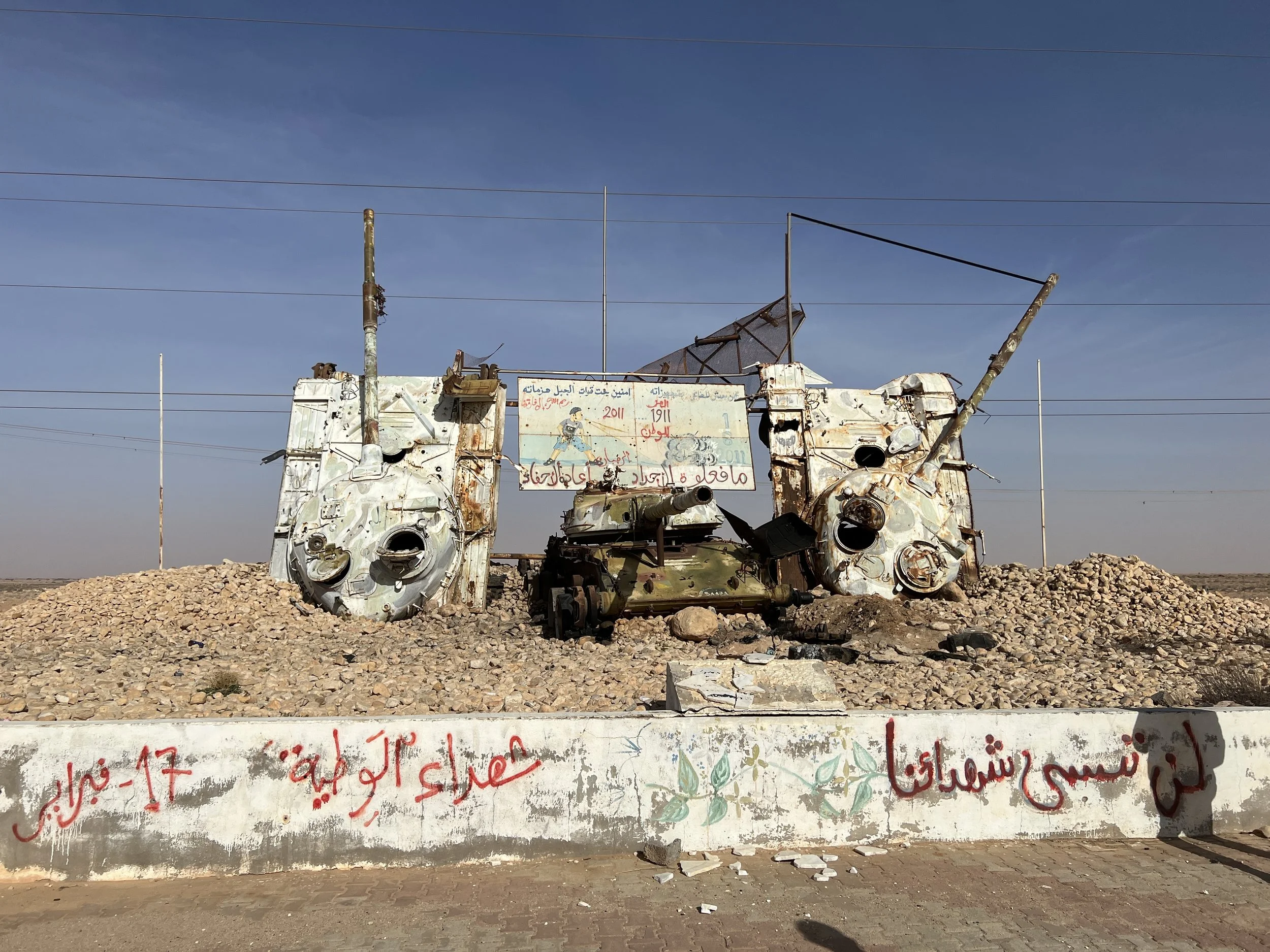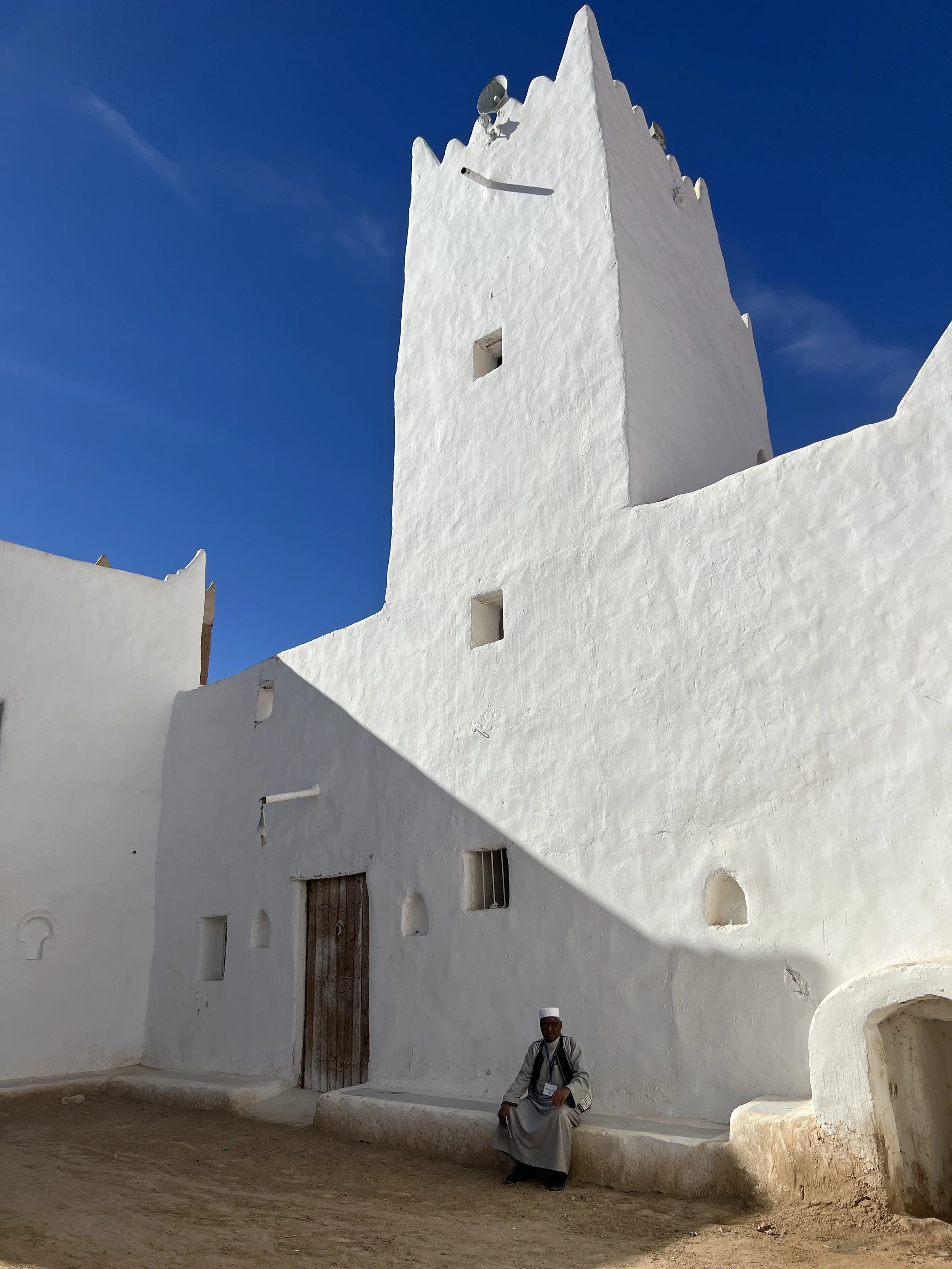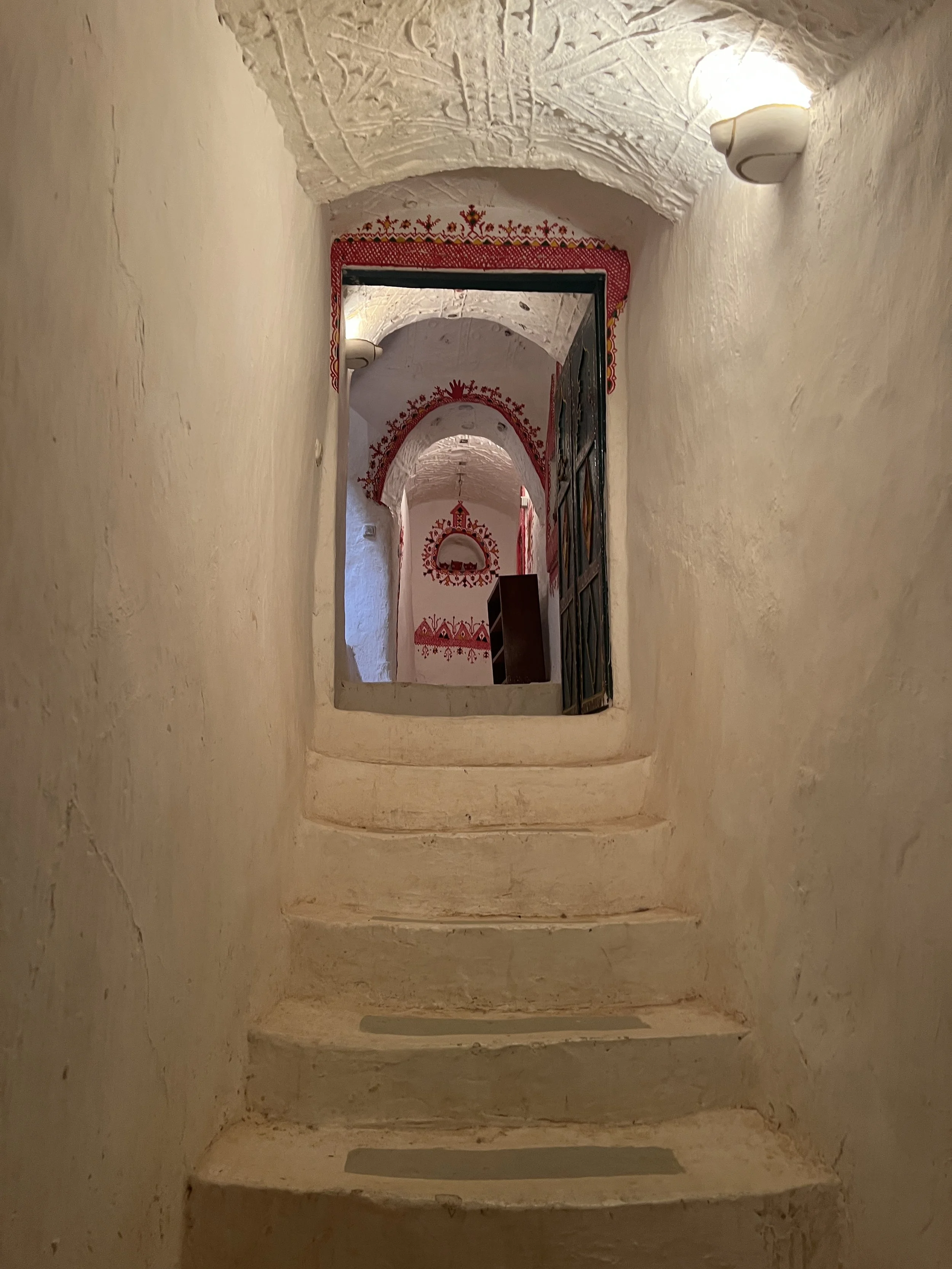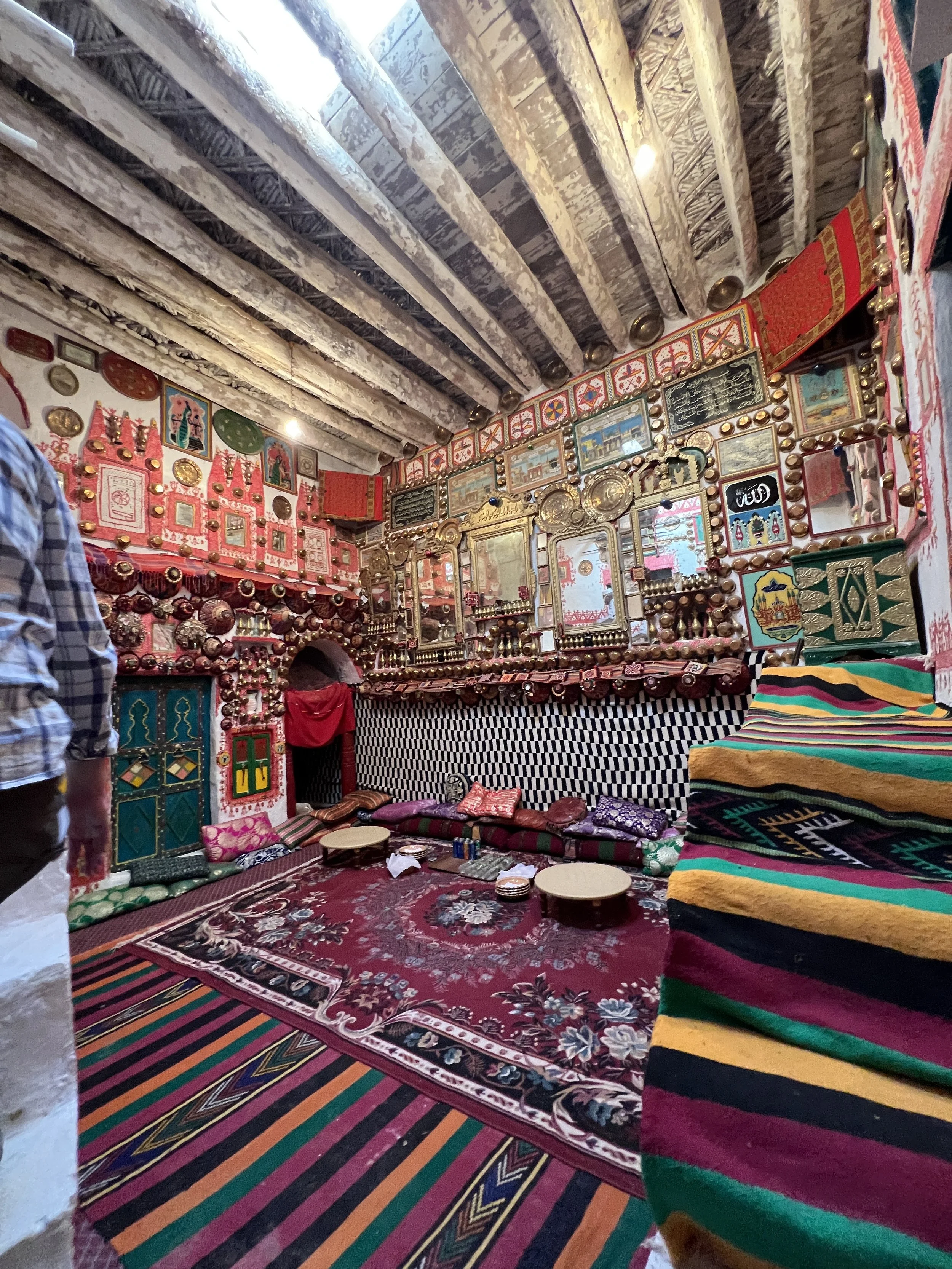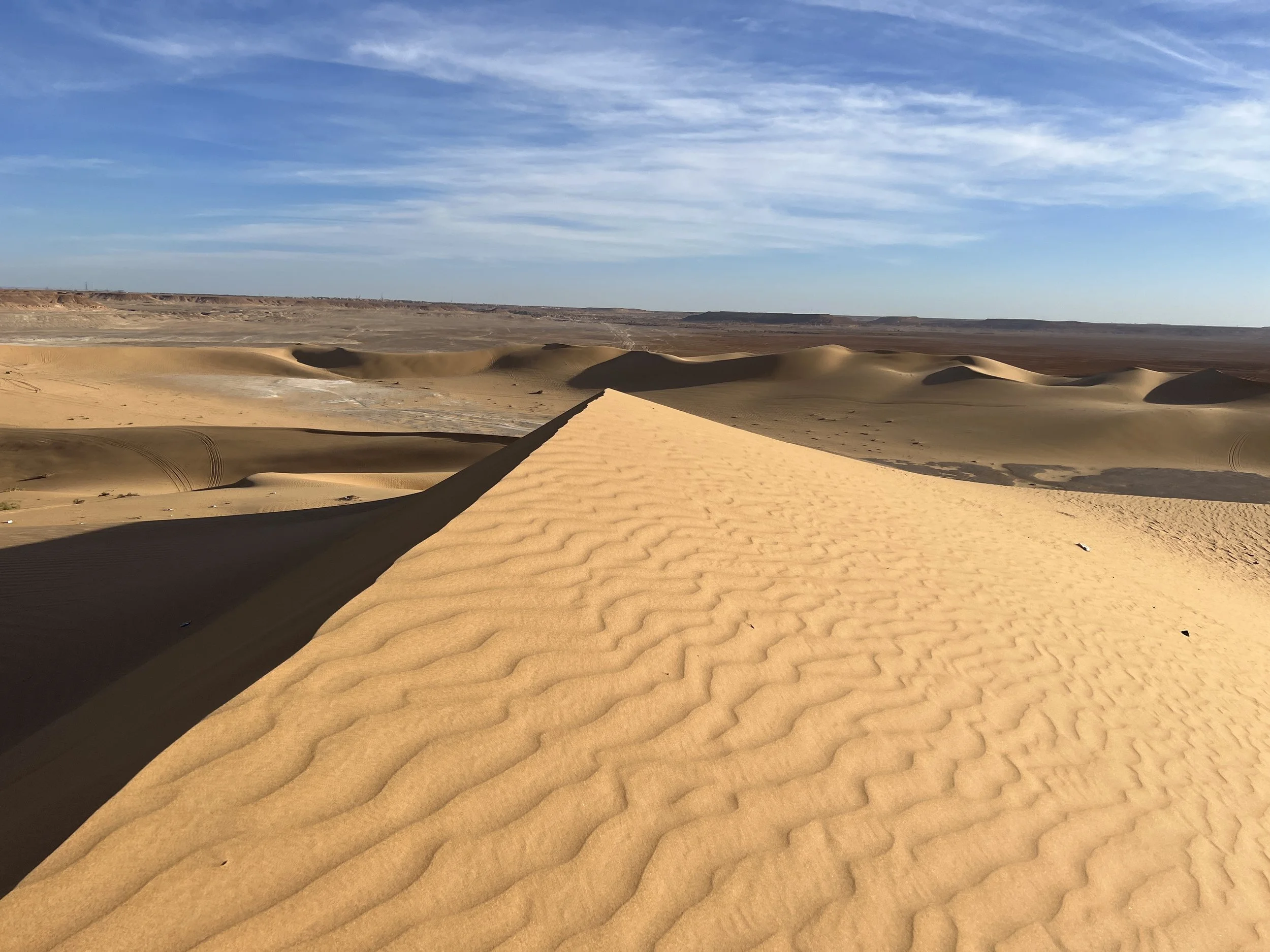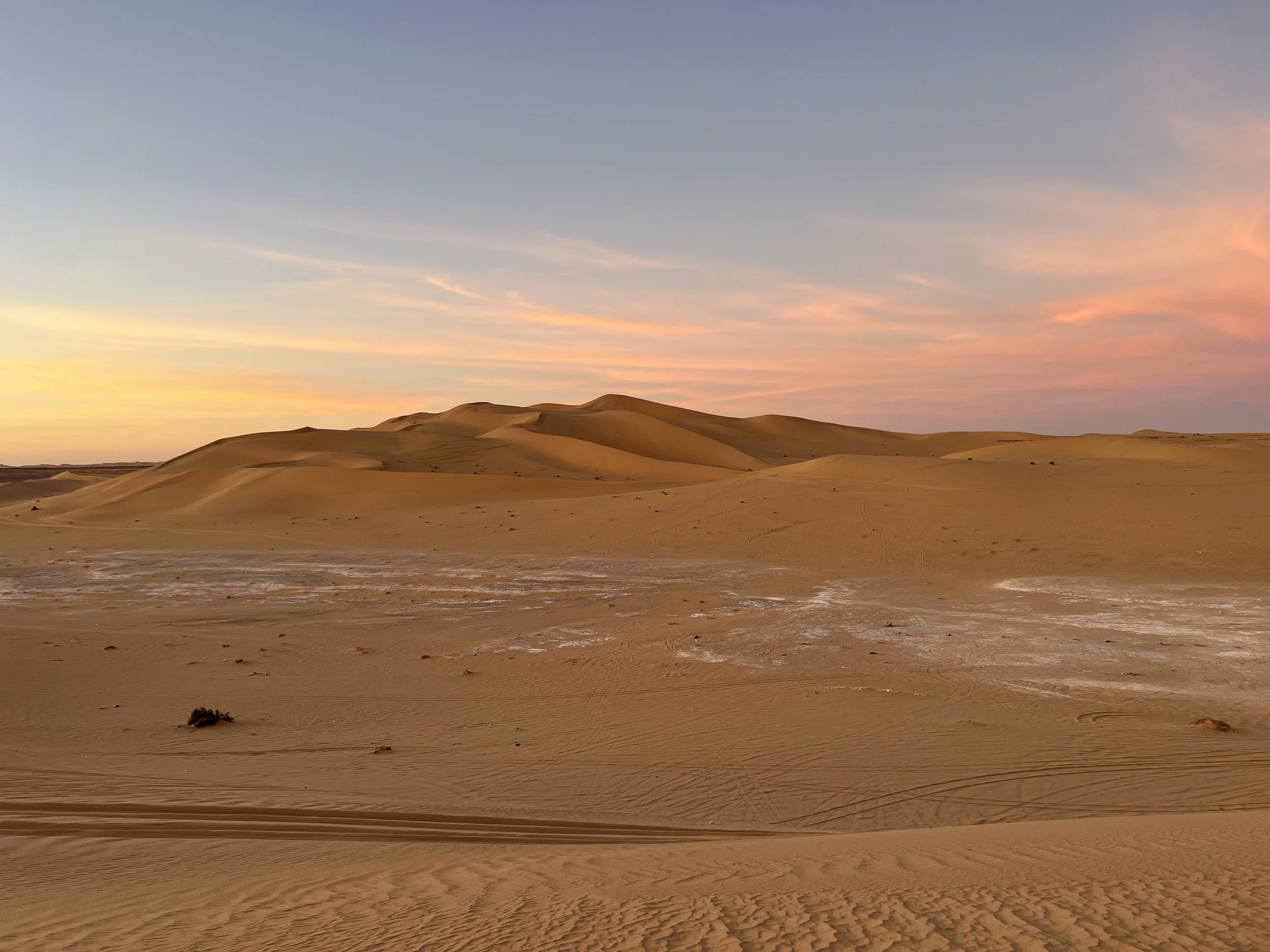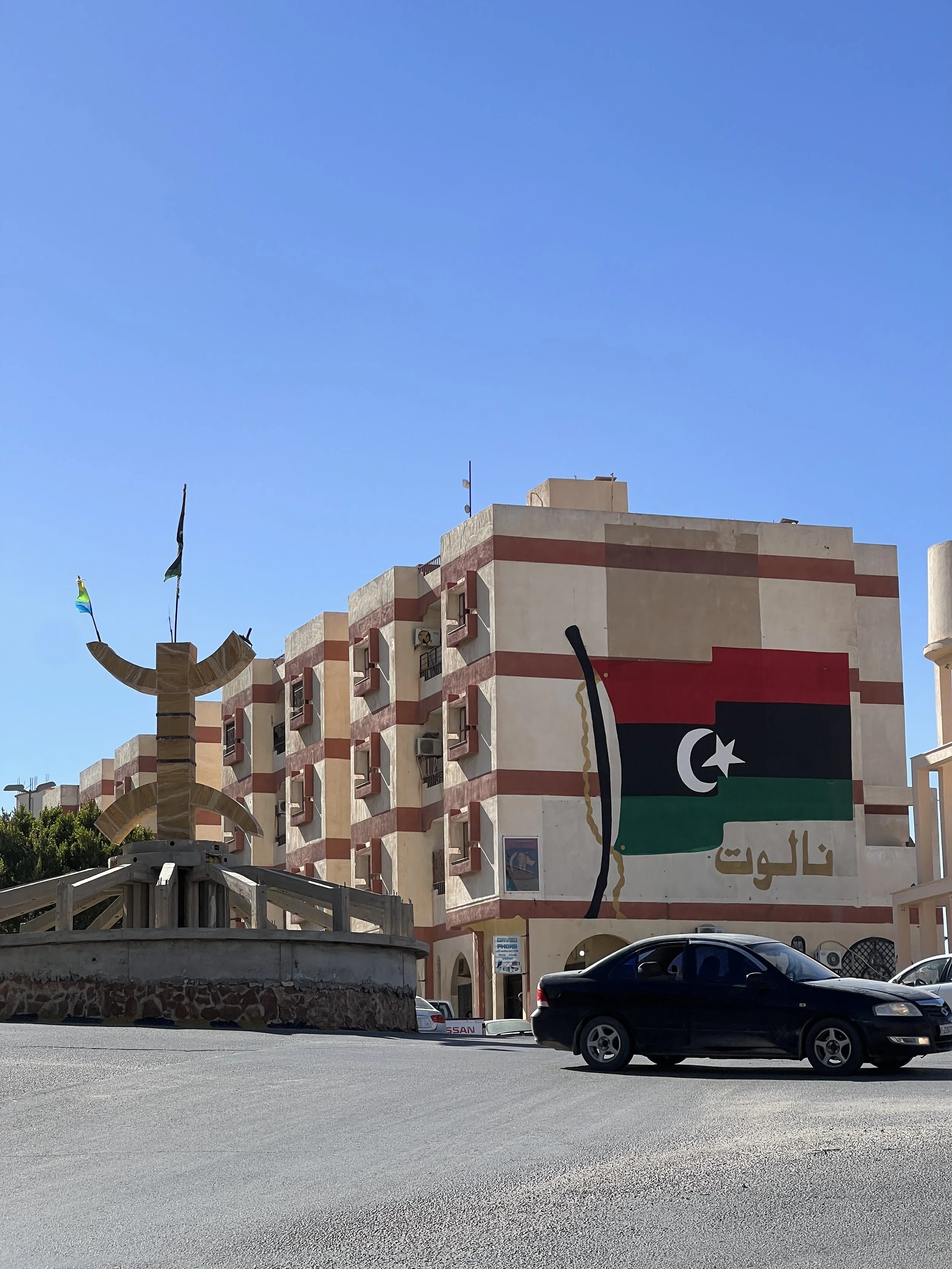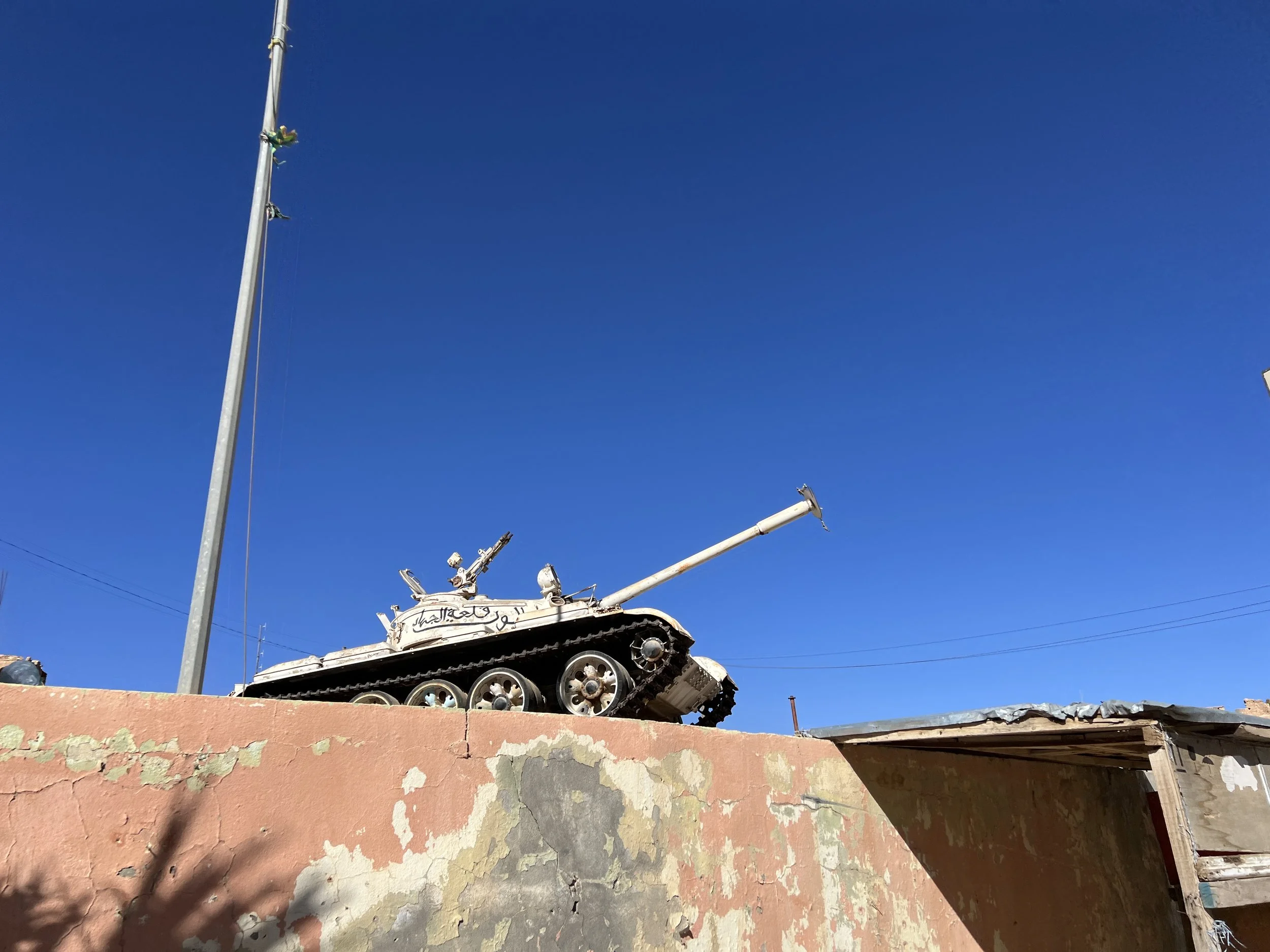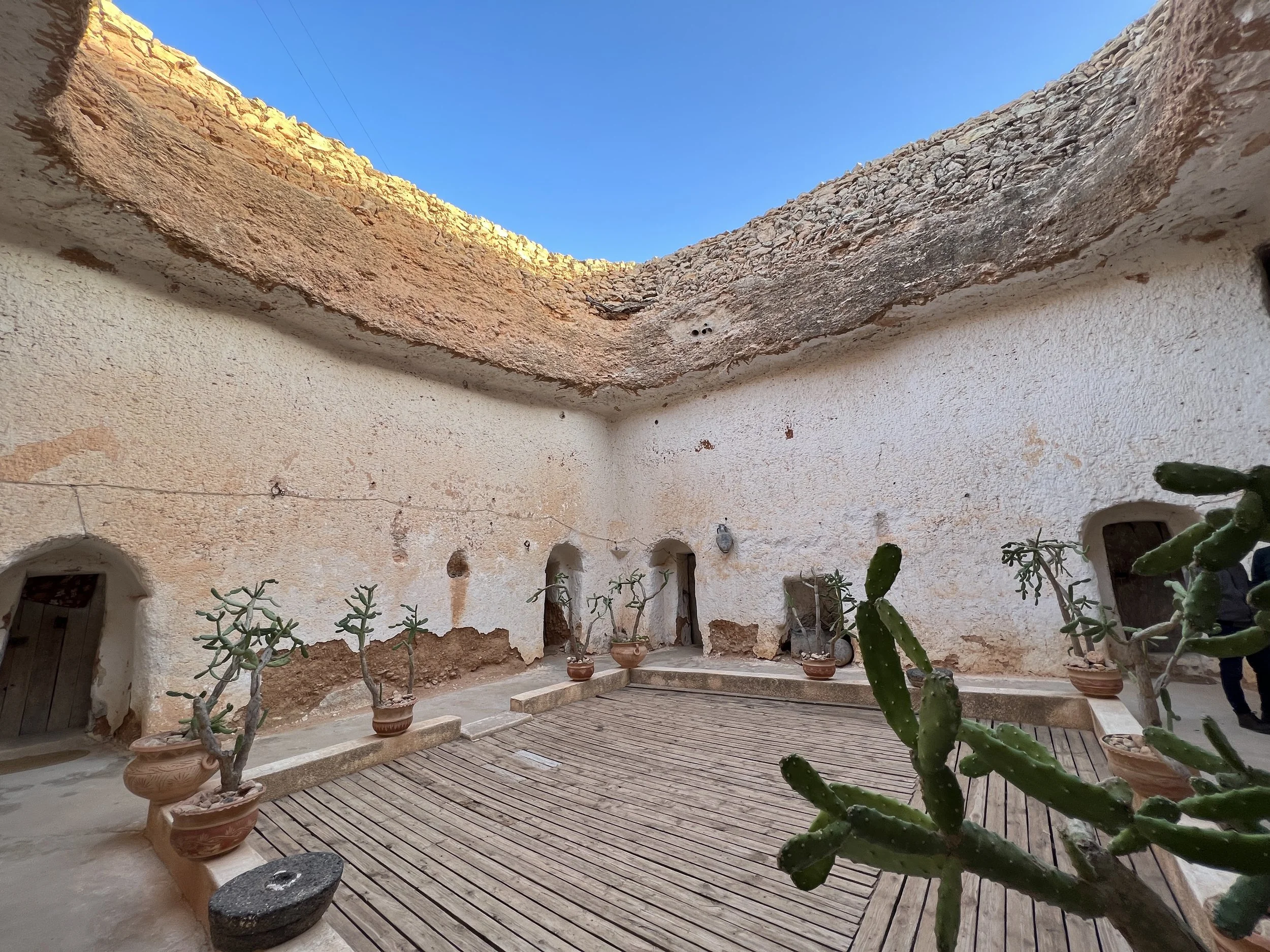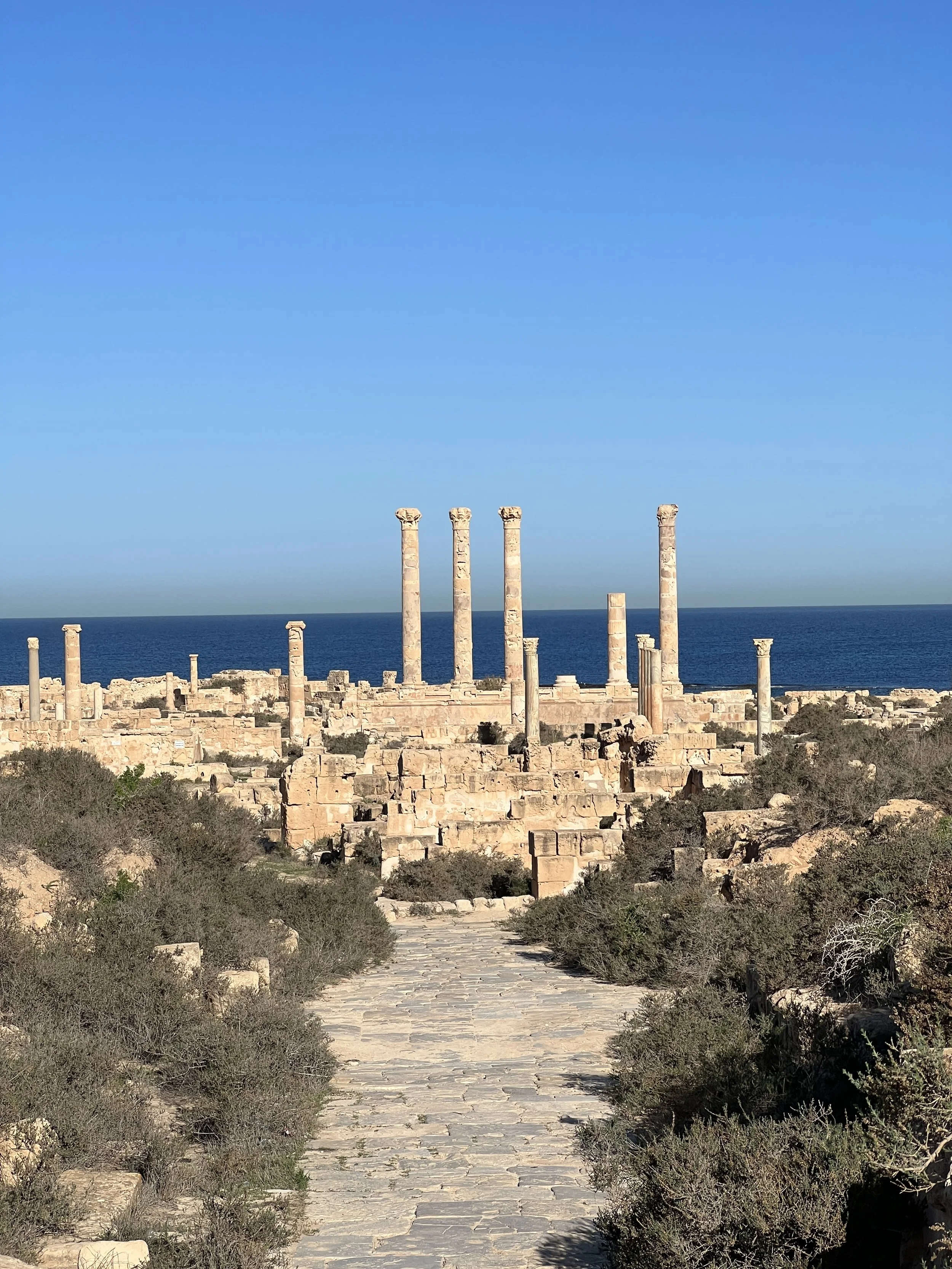Libya: Part 2
Greetings from Tunis, Tunisia!
I am back in Tunis for a few days to finish some of the last of my schoolwork for this semester (Thank you, Professor W. for allowing me to take my final remotely!) before I head to Germany to get my bag fixed (and, secondarily, visit my grandparents 😉)
Here’s the second installment of the Libya trip—
Day 4: The Road to Ghadames
Bright and early the next morning, we started the long journey into the Libyan Desert— down to the city of Ghadames. Nonstop, the drive takes about eight hours, but heading south, we would be making a few stops at historic sites.
Our first stop was an old storage site. Think of this like the old version of public storage units.
Back in the day, the journey to Mecca for Haj would take up to two years. People couldn’t carry all their belongings and grain with them, so they would leave them in facilities like these. The small “windows” on the side, circular interior, and dry air provided excellent conditions that kept the grain fresh.
In one of the rooms, I found a bottle lettered “Birra of Tripoli.” In a country that has been dry for decades, that’s a pretty rare site! I found it peculiar that the country has remained alcohol-free even after Ghadaffi’s overthrow. Prohibition was a policy he implemented.
Then, we stopped by a memorial of sorts. This was two tanks turned upright and one in the middle to mark the brave Libyans who defeated Ghaddafi’s forces. We were some of the first ever tourists to visit this because the police used to prohibit tourists from stopping there. One of the unique things about traveling in Libya is the fact that every tourist— whether they are traveling in a group of eight or one—must have a police officer travel with them.
This is in addition to the guide, which is also mandatory. However, there are a few other countries, like Yemen, North Korea, and Turkmenistan, where you must also have a guide with you. Because of this rule, many solo travelers are accompanied by three Libyans when going about: a driver, a guide, and a police officer. And that’s all before the local guides you must hire for many of the individual sites. Everyone wants their piece of the (minuscule) Tourist Pie here in Libya.
We were then welcomed into Berber territory by a Berber language sign. Under Ghaddafi, all signs of this culture were repressed, and its language was banned from being taught, so nowadays, people are very proud of the culture, with many flags and symbols being placed around the various cities and towns in this region.
After continuing down the road a bit longer, we stopped at an old town that had an excellent viewpoint. I thoroughly enjoyed looking out into the great unknown.
Our final stop before reaching Ghadames, near the town of Kabaw, was another grainery, though this one was older and just so fascinating to look at. The little rooms with sticks poking out of them made it look like a bunch of birdhouses clustered together. I felt a little more uneasy about summiting this one, but for the photo, it was a must.
When we finally made it to Ghadames, we dropped our bags off at the hotel and then walked to a pizza shop for dinner. On the way, we heard gunshots and saw fireworks in the sky. We were told this was standard operating procedure for weddings. At one point, cars were crazily driving around the traffic circle and firing out of the window. One of my group mates found a live bullet (not a blank) on the side of the street during our walk. The war might be over, but danger remains, now danger from celebration. =
There were also many patriotic murals on our walk.
Day 5: Ghadames
In the morning, at breakfast, I was quickly ridiculed by a fellow traveler for my choice to eat eggs with honey. I was met with even more horror when I explained to my travel mates that I often enjoy peanut butter with my eggs as well. Haters gonna hate, I guess.
The hotel is a very grand, labyrinthian building with loads of rooms. However, during our time there, we noticed no other visitors. The eight hour drive is off-putting for most of the few visitors Libya receives, but the airport here is still held by some sort of militia.
That morning we high-tailed it over to the old city, but not without first stopping at yet another coffee shop. Our tour guide, Mohammed Ali, took us through the winding corridors of this UNESCO Heritage Site.
Due to the heat that is ever present in this part of the world, much of the city’s alleys are enclosed, with just the occasional atrium to allow fresh air to come in.
After trudging through, we went to an old home within the city for some lunch.
In the afternoon, we headed 30 minutes outside the city into the desert. Here there is a hill from which you can see where the tri-nation point of Algeria, Libya, and Tunisia lies. It was also a great place to take in the vastness of the desert.
Then, we headed a few minutes away to go dune bashing. I had been dune bashing once before, in Oman, but I picked the one day it decided to rain in the desert. So, I was happy to get the “real” experience with dry sand and dramatic falls. Our group was split into two groups, and the driver of the other car scammed them by refusing to summit any of the taller dunes due to “lack of Petrol.” This is in a nation where one can get a liter of gas for under 3 cents.
If you decide to go to Libya, make it clear to your guide beforehand that you will refuse to pay if you get excuses like this from your driver.
Taking in the sunset on a dune and starting out into the seemingly endless expanse of them was an experience I won’t soon forget.
We then watched the stars while nomad Touaregs baked us bread in the sand. The bread was fine, albeit quite crunchy from all the sand.
Day 6: Back to Tripoli
Today was primarily dedicated to taking on the long drive back to Tripoli.
We made a couple of stops, including at an old abandoned town that had amazing views over a valley.
The main stop, however, was close to Tripoli where, for protection from people and heat, families have traditionally lived in homes carved into the Earth.
These underground homes have a central courtyard that looks out into the sky and enclosed rooms in the earth. Each family lives in one room, and there’s a central kitchen, latrine, and storage area.
After stopping for a quick dinner at a mall, we made it to the Victoria Hotel in Tripoli. This was the hotel where we were supposed to spend all of our nights in Tripoli, but it was sold out for the first two we were there.
Day 7: Sabratha and Departure
We had a nice breakfast on the rooftop of the Victoria Hotel and then headed to the Roman city of Sabratha. Our group was standing around for a while, so a couple of us walked into the city’s amphitheater. Then, we joined the tour, which went through all the parts of the city. Since it is set right on the Mediterranean, the views are quite pleasant, and one can tell this was a very grand city.
However, some of the city’s highlights, like its mosaics, are locked away in the Sabratha Museum, and it’s anyone’s guess when that will reopen.
Before heading to the airport, we stopped at a fish restaurant, which I quite enjoyed.
Flying out was much more of a breeze than I expected— a quick check-in, just a few minutes at immigration, and a joke of a security screening. One group member brought multiple bottles of water through without anyone asking a question. Soon enough, we landed in Tunis, where I headed back to the Marriott for a good shower!
Overall:
I quite enjoyed Libya on the whole. It’s crazy to think how large this country is, considering it took us six days to visit only a small corner of it. I am seriously considering returning sometime in the not-too-distant future to visit Benghazi and the Greek ruins that one can find on that side of the nation.
If you work directly with a tour guide, you could coordinate the drives better. One could fly directly into Misrata, then drive back to Tripoli, and then down to Ghadames. This would save you one way of the Tripoli to Misrata drive. One can also now include a trip to Benghazi and elect to fly into either Tripoli or Misrata and then internationally out of Benghazi. If you’d like to book a tour to Libya, please feel free to message / DM me, and I will introduce you to our tour guide directly.



